Osmundastrum cinnamomeum
A common fern of wetlands and bogs
Osmundastrum cinnamomeum cinnamon fern
Add to MyPlants View Locations
The more common of flowering ferns, this fern is found in moist, acidic soils in bogs and wet areas. The sterile fronds of this fern are similar in appearance to those of interrupted fern. In early spring however, the fiddleheads of cinnamon fern are covered with silvery white hairs, which turn cinnamon brown as fronds expand. At maturity some of this wool remain on the underside of pinnae at the base of the rachis, making it easy to tell apart from the interrupted fern. Also, the lobes of cinnamon fern do not overlap as do the ones of the interrupted fern.
The fertile fronds hold the clusters of sporangia and turn from deep green to cinnamon as they mature and wither back in early summer releasing the spores.
Habitat & Range
Swamps, around wetlands, river/creek shores, moist forests. Grows best in shade but will also thrive in the sun. Likes wet acidic soils.
Range is from Nove Scotia to Minnesota, south to Florida and Mexico.
| EMP: | FACW |
|---|---|
| NCNE: | FACW |
Phenology
Fertile fronds die back in early summer as the spores are released.
Characteristics
Sterile fronds mostly erect or arching, 20-60 in long.
Fertile fronds first to appear and first to wither, start out as bright green and then turn to brown cinammon color. From 7 to 16 in long.
Sterile blade large, broadly lanceolate; cut into 20 or more pairs of pinnae, narrowing gradually to tip. Mostly smooth, but in spring covered with scattered tufts of wool.
Fertile blade stiff, erect, narrow, and pointed; all pairs of pinnae short (from 1 to 5 in), narrow, steeply ascending.
Pinnae slender and oblong; narrowing gradually to tip; cut deeply into nonoverlapping lobes; can be opposite or alternate. Pale cinnamon wool tufs on underside at base near rachis. Veins forked 1-3 times.
Rachis smooth, green; semigrooved in front; with scattered tan to pale cinnamon-colored wool during early part of the season.
Stipe smooth, green; covered with cinnamon wool at first, only a little remaining when mature. Slightly shorter than blade. Fertile fronds die back early summer; often found as withered entwining stalks covered with light cinnamon-tan wool, still holding rusty empty sporangia at the ends.
Rhizome very stout and stubly.
Sori There are none, naked sporangia large, short-stalked, in clusters; deep green when mature, turning golden-brown after spores are released.
Identification Tips
In early spring fiddlehead is covered with cinnamon-tan wool, at maturity a little bit remains on the stipe and underside of lower pinnae.
Plant Codes
S-rank: S5 (Secure)
G-rank: G5 (Secure)
APG/Taxonomization Info
This species was recently moved from genus Osmunda to a new genus Osmundstrum. Some keys only recognize Osmunda genus.
Osmundastrum cinnamomeum cinnamon fern
Synonyms: Osmunda cinnamomeaAdd to MyPlants View Locations
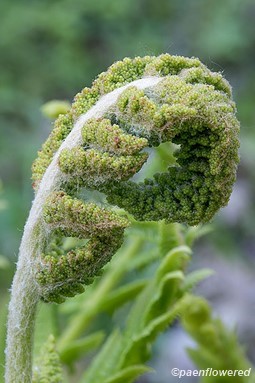


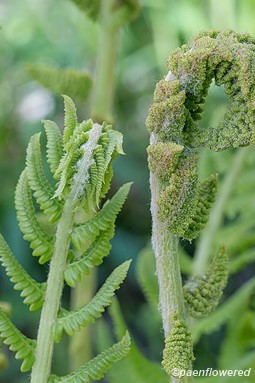


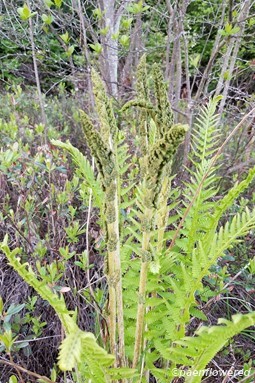
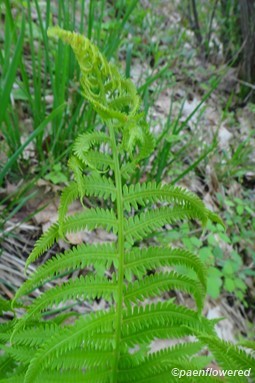
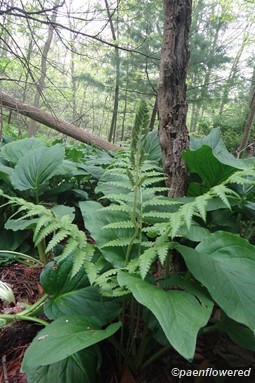



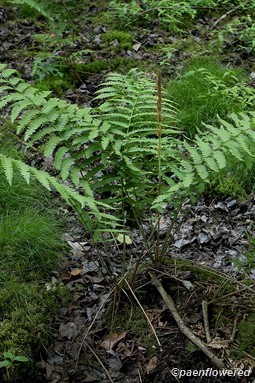
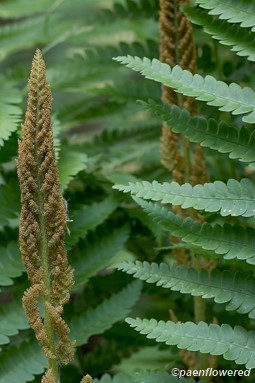
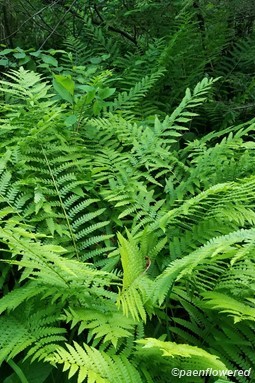



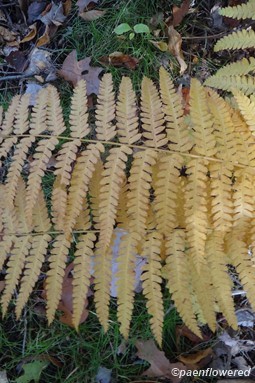
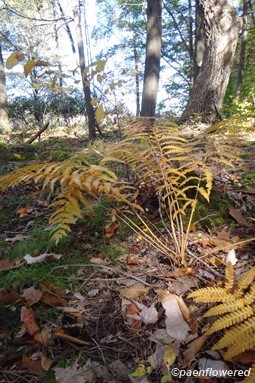

Comments
Have you spotted this plant in your area? We'd love to hear about your experience! Share your comments or questions about the plant below. Comments are moderated before posting.